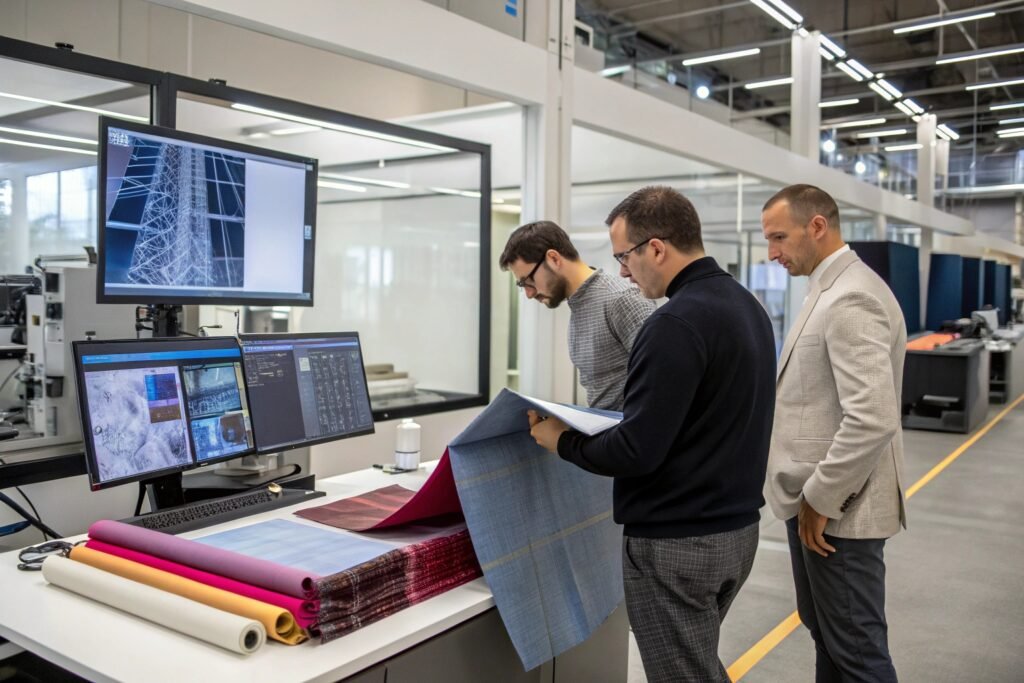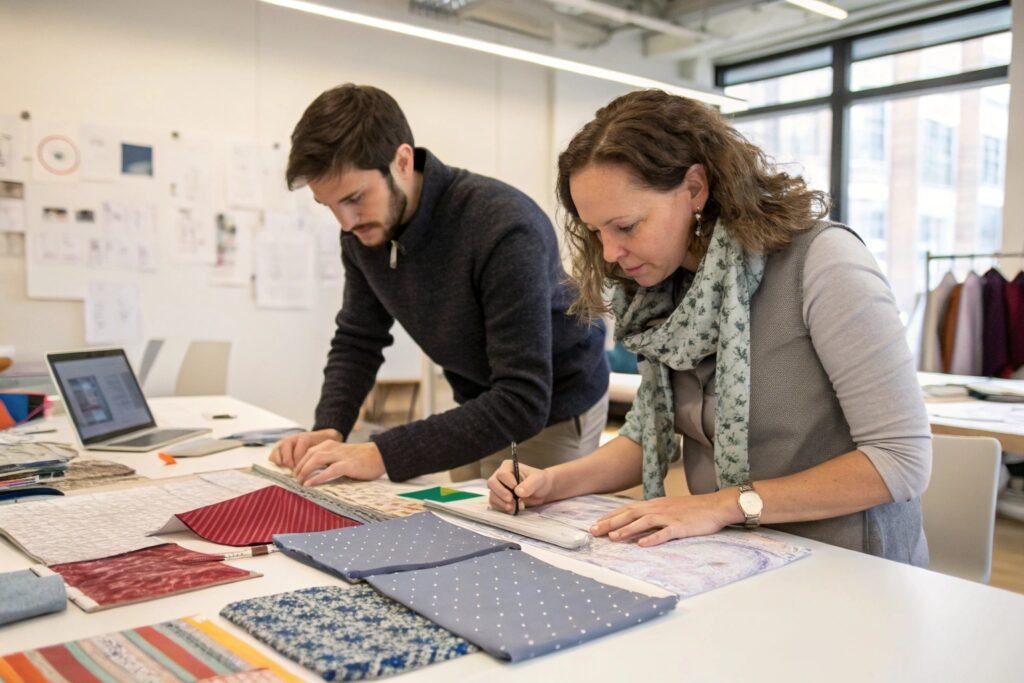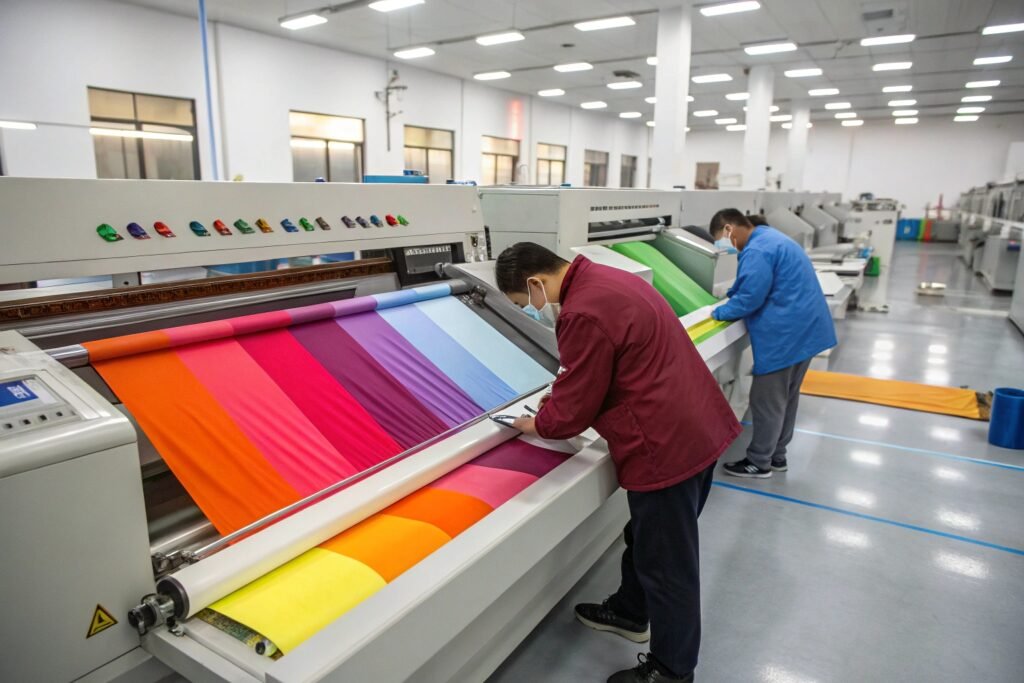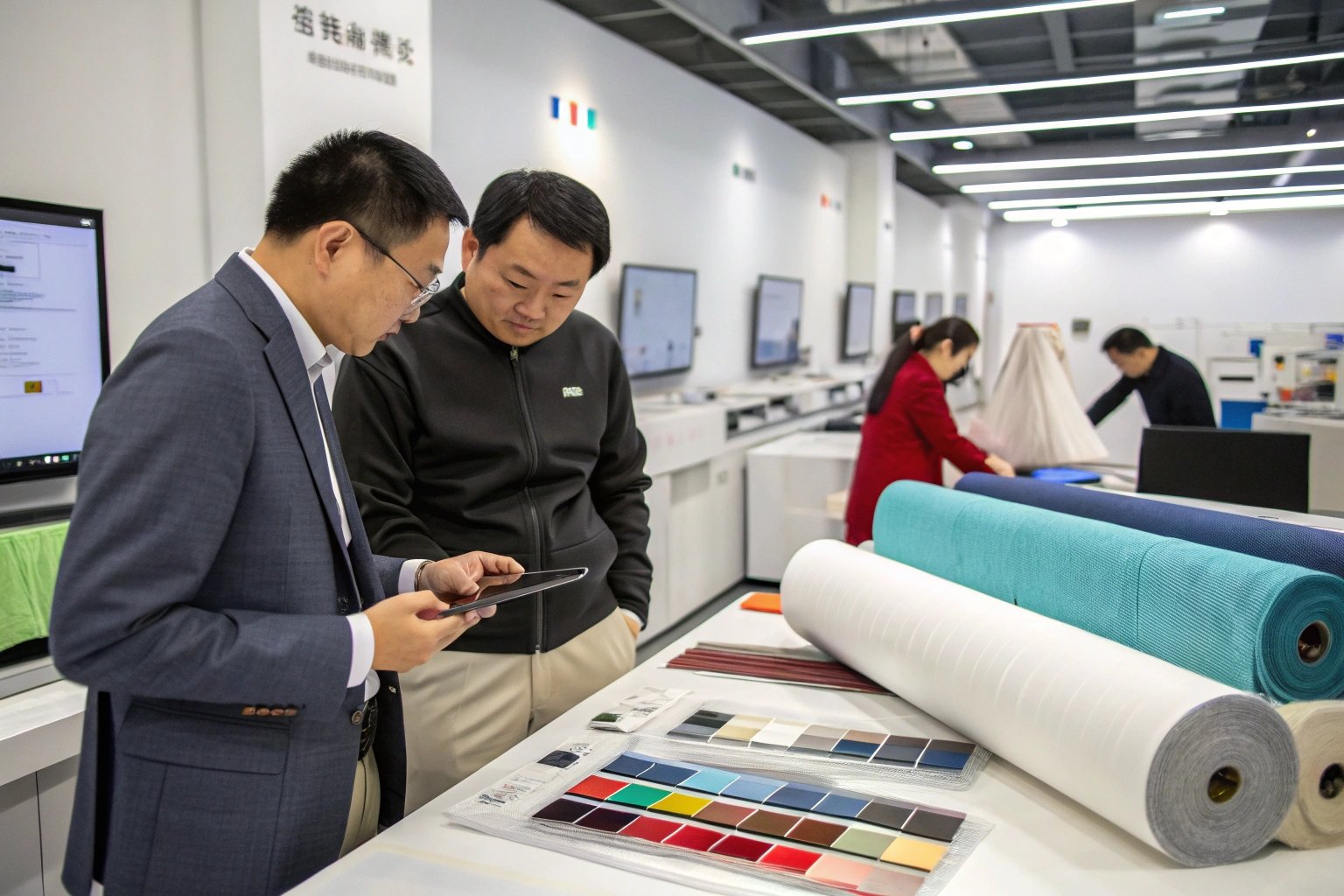Innovation isn’t optional anymore—it’s survival. Global buyers tell me every season: “We need something new.” But product development is getting tighter, faster, and more technical. If your fabric supplier can’t innovate with you, they’re holding you back.
R&D-intensive fabric mills can help your brand stand out with functional, sustainable, and fashion-forward textiles that meet global compliance and customer demand—while speeding up time-to-market.
I’ve seen how fabric R&D turns ideas into samples in days, not weeks. At Fumao, we invested in our own CNAS-certified lab and AI-powered trend analysis platform for this reason. Let me show you why this investment in research is your competitive edge.
How Do R&D-Focused Mills Accelerate Product Innovation?
Fashion trends move fast. Athleticwear evolves every season. Eco-standards change every year. Yet too many mills offer the same old catalog. That’s why working with an R&D-backed mill is a game changer.
Research-driven mills like ours accelerate textile innovation through in-house labs, advanced machinery, and predictive trend analysis. This helps brands launch unique, compliant, and timely products.

What Capabilities Do R&D Mills Offer That Traditional Ones Don’t?
We’re not just weaving—our lab experiments with coatings, treatments, and fiber blends. Our team of 20+ researchers prototypes over 1,000 new fabrics each year. Whether you want a UV-resistant bamboo blend or biodegradable waterproof nylon, R&D enables those breakthroughs.
What Makes Trend Forecasting a Key Innovation Driver?
Many fabrics fail because they’re already outdated at launch. We use AI trend modeling and global fabric fairs to inform our R&D pipeline six months ahead. So, by the time your collection drops, the fabric speaks to next-season buyers—not last year’s ideas.
| Feature | Traditional Mill | R&D-Driven Mill |
|---|---|---|
| Fabric Sampling Time | 7–14 days | 24–48 hours |
| New Designs per Year | <200 | 1000+ |
| Functional Finishes Offered | Few | Dozens (e.g., anti-odor, cooling) |
| AI Trend Forecasting | None | Integrated |
Can Fabric R&D Reduce Time to Market for New Styles?
Speed matters. But rushing without R&D creates costly mistakes. A strong fabric development team can shorten your sampling window without compromising quality, performance, or compliance.
With R&D, we can deliver ready-to-test fabric samples in 48 hours, helping brands drastically reduce their design-to-shelf cycle from months to just weeks.

How Can Brands Shorten Their Development Cycles?
Let’s say you want a double-knit moisture-wicking jersey in a custom pastel. A traditional mill might take two weeks just for lab dips. With our R&D team and in-house dyeing partners, we deliver exact-match lab dips in under 24 hours and production samples within two days.
Does Faster Sampling Mean Lower Risk?
Yes. We catch errors and test shrinkage, pilling, and colorfastness early using CNAS-level testing. So, when it’s time for production, there are no surprises. We also save time by simulating different constructions digitally before weaving test yardage.
| Step | Traditional Timeline | With R&D Support |
|---|---|---|
| Lab Dip Approval | 7 days | 24 hours |
| Handloom / Strike-off | 10–14 days | 48 hours |
| Bulk Sample Testing | Post-production | Pre-production |
| Final Approval & Order | 3–4 weeks | 5–7 days |
What Technical Capabilities Should You Look for in a Mill?
Not all mills are built the same. If you want true textile innovation, your supplier must go beyond basic looms. Ask them about their lab, machines, and how many R&D staff they have.
Look for mills with accredited testing labs, R&D engineers, digital simulation tools, and partnerships with chemical finishing experts. These traits mean they can develop future-ready fabrics, not just copy what’s on the market.

What Types of Tests Should a Modern Fabric Lab Offer?
Your supplier should test pH, colorfastness, tear strength, and shrinkage at minimum. Advanced labs also offer antibacterial testing, UV ratings, thermal mapping, and friction resistance. At Fumao, we follow SGS and ITS compliance standards, using QR-based tracking for every batch.
Why Do Specialized Machines Matter?
Machines enable function. If a mill doesn’t own coating, calendaring, or lamination machines, it can't deliver waterproof or breathable textiles. We’ve invested in foam lamination for athleisure, micro-sanding for softness, and spray coating for eco-finishes—all in-house.
| Capability | Importance |
|---|---|
| CNAS or ISO Certified Lab | Ensures compliance testing |
| Functional Coating Machinery | Enables advanced finishes |
| Digital Weave Simulators | Faster prototyping |
| R&D Team with Chemical Background | Custom finish development |
How Does Fabric Innovation Support Brand Differentiation?
Innovation isn’t just about utility—it’s about storytelling. Brands win when they can say “our fabric does what others can’t.” Whether it’s thermal-regulating coats or stain-resistant kidswear, those are the differentiators that win buyers and press.
Partnering with an R&D-backed mill allows brands to launch exclusive fabrics that can’t be copied easily, building stronger brand stories, customer loyalty, and margin protection.

Can Fabric Innovation Be a Brand’s Competitive Advantage?
Absolutely. I’ve seen clients launch 100% biodegradable windbreakers that became their top sellers. Others released satin alternatives made from bamboo silk with zero water bleaching. They beat competitors not by cost—but by story and function.
Does Exclusive Fabric IP Offer Long-Term Value?
Yes. We offer clients limited-release fabrics with exclusive rights for 12–18 months. This protects brand identity, especially in luxury, sportswear, and kidswear. It also justifies higher pricing. Fabric is no longer a cost—it becomes a product feature.
| Brand Goal | Fabric Innovation Role |
|---|---|
| Sustainable Story | Organic / Recycled / Biodegradable |
| Functional Marketing | Moisture-wicking, Antibacterial |
| Price Justification | Patented Weaves / Finishes |
| Press & Buzz | Unique Fabric IP |
Conclusion
Innovation can’t be outsourced—it must be embedded in the mill. When your supplier has in-house R&D, you get speed, creativity, compliance, and exclusivity. Whether you’re a startup brand or a global label, fabric is your canvas—and innovation is the paint. At Fumao Fabric, we invest millions annually into research, not just because it excites us—but because it makes our clients win. If your current mill isn’t evolving, maybe it’s time to partner with one that is.










